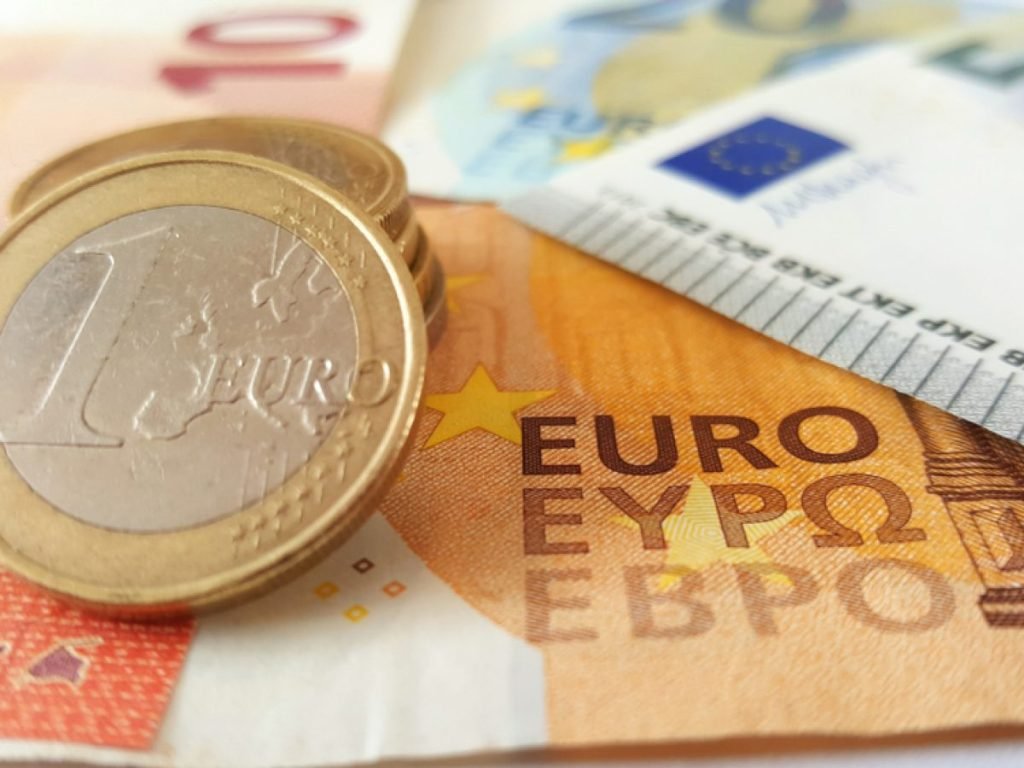
- Euro vs USD traces out a triangle-like pattern, tapering to a low-vol point in mid 1.09s.
- Federal Reserve’s Beige Book reaffirms the market’s mildly hawkish stance, propping up US Dollar.
- Euro awaits defining data on May 2 when ECB will release its Bank Survey and April inflation data.
The Euro (EUR) continues trading in the mid 1.09s versus the US Dollar (USD) during the early European session on Thursday. More broadly, the pair has pulled back from the recent April 14 highs of 1.1075 as the US Dollar recovers on bets the Federal Reserve (Fed) will continue raising interest rates.
From a technical perspective, the Euro-Dollar pair is in a medium-term uptrend which is biased to extend. Scoping in, price action appears to be coiling to a point, and the diminishing volatility could be the precursor for a breakout move on the horizon.
EUR/USD Market Movers
- The USD remains supported after the most recent US economic report, the Fed’s Beige Book, stated, “Economic activity was little changed in recent weeks.”
- The same report mentioned credit conditions have tightened in the aftermath of the banking crisis – but that’s to be expected.
- USD continues to benefit from St. Louis Fed’s Bullard talking up further rate hikes due to persistent inflation and overblown recession fears.
- Unexpectedly strong first quarter earnings from big US banks like JP Morgan and BofA help bandage the wounds from the sector’s crisis in March, further supporting the Greenback.
- Recent US data continues to show a strong labor market putting pay to recession fears.
- The Euro remains supported by expectations that the ECB will continue with interest rate hikes, though their size will be data-dependent.
- European Central Bank’s chief economist Philip Lane has said the health of the region’s banks, as reported in the ECB Bank Lending Survey (BLS) (out on May 2), will be a key determinant of whether the ECB hikes aggressively or not.
- Lane further sees April HICP (also released May 2) inflation as likewise key to outlook on rates.
- For the Euro, the ECB’s minutes out at 11:30 GMT, a speech by ECB President Christine Lagarde at 12:00, and April Consumer Confidence out at 14:00, are the key data releases on Thursday’s docket.
- Fed commentary as well as Initial Jobless Claims and Philadelphia Fed Manufacturing are the main releases for the US Dollar.
EUR/USD technical analysis: Overall still trending up
EUR/USD has been rising in a medium-term uptrend since reversing at the September 2022 lows, and this established trend is likely to continue. After a pullback in February 2023, EUR/USD recouped its losses during March and made new year-to-date highs above 1.1000 on April 13.
Drilling down to the 4-hour chart (below) and price action can be seen trading with steadily diminishing volatility in the mid 1.09s. It could be tracing out a triangle pattern which will eventually break out either higher or lower. Triangles are usually composed of five waves and the current wave looks like it might be the 4th wave. If so, then a breakout could be close at hand.
The Chaikin Money Flow oscillator, an indicator that is supposed to help give clues as to the eventual direction of a breakout from a range bound market, has been below the zero-line during most of the evolution of the triangle, suggesting a slight bias towards expecting a downside break.
If price pierces below 1.0909 it would probably confirm the triangle was breaking lower whilst a breach of the 1.0999 April 17 high that it was higher.
More broadly, a break and daily close above the 1.1075 year-to-date highs of April 14 would provide Euro bulls with added confidence to push price up to the next target at around 1.1190, where the 200-week Simple Moving Average (SMA) is situated and likely to provide pushback.
From a bearish perspective, a break and close below the lower high at 1.0830 would bring into question the strength and validity of the uptrend and could see losses extend down to a confluence of support at 1.0750.

